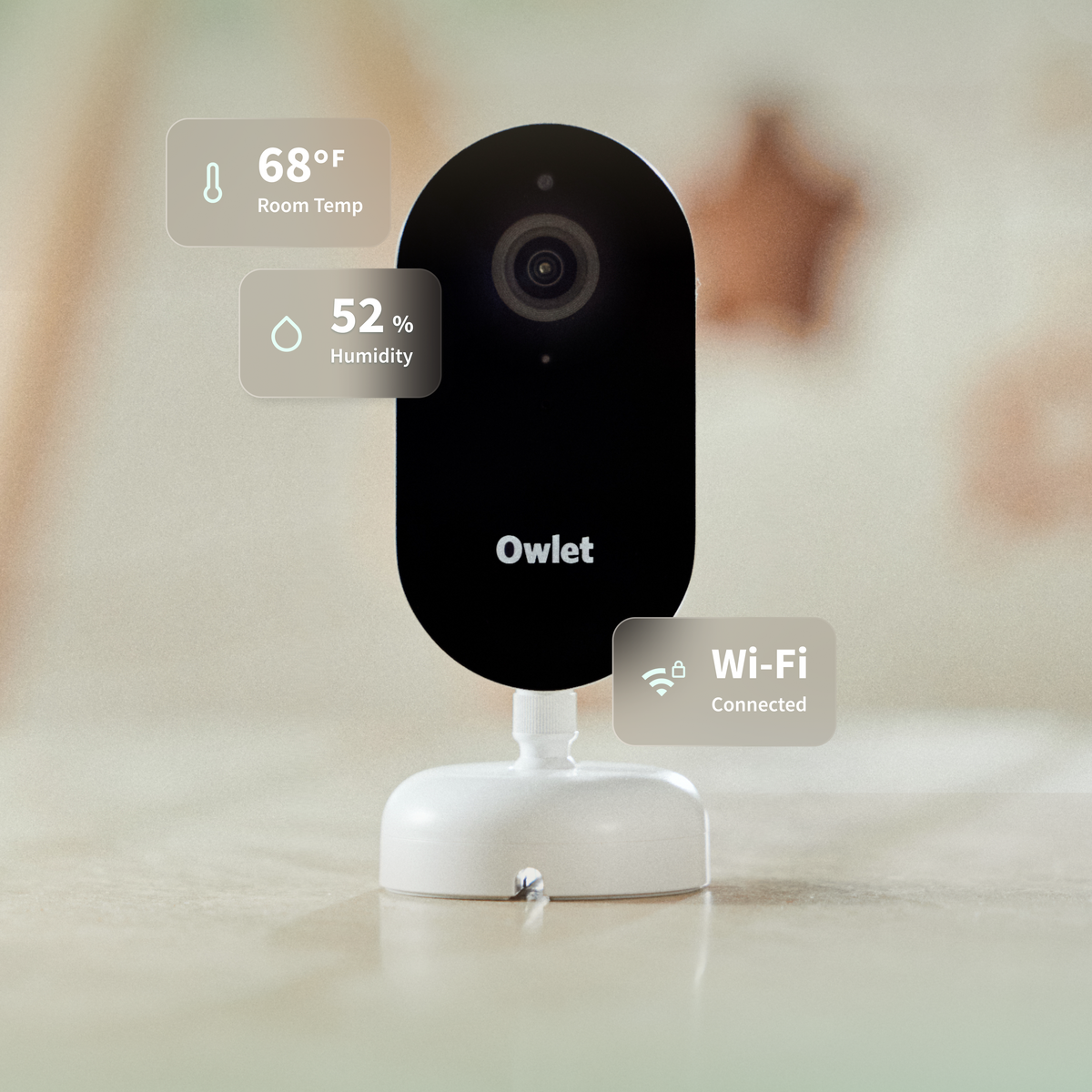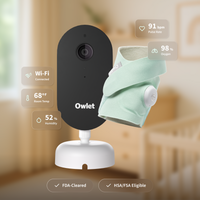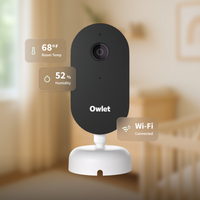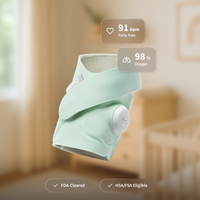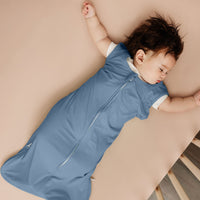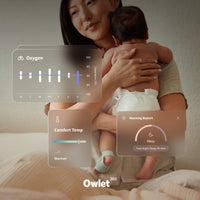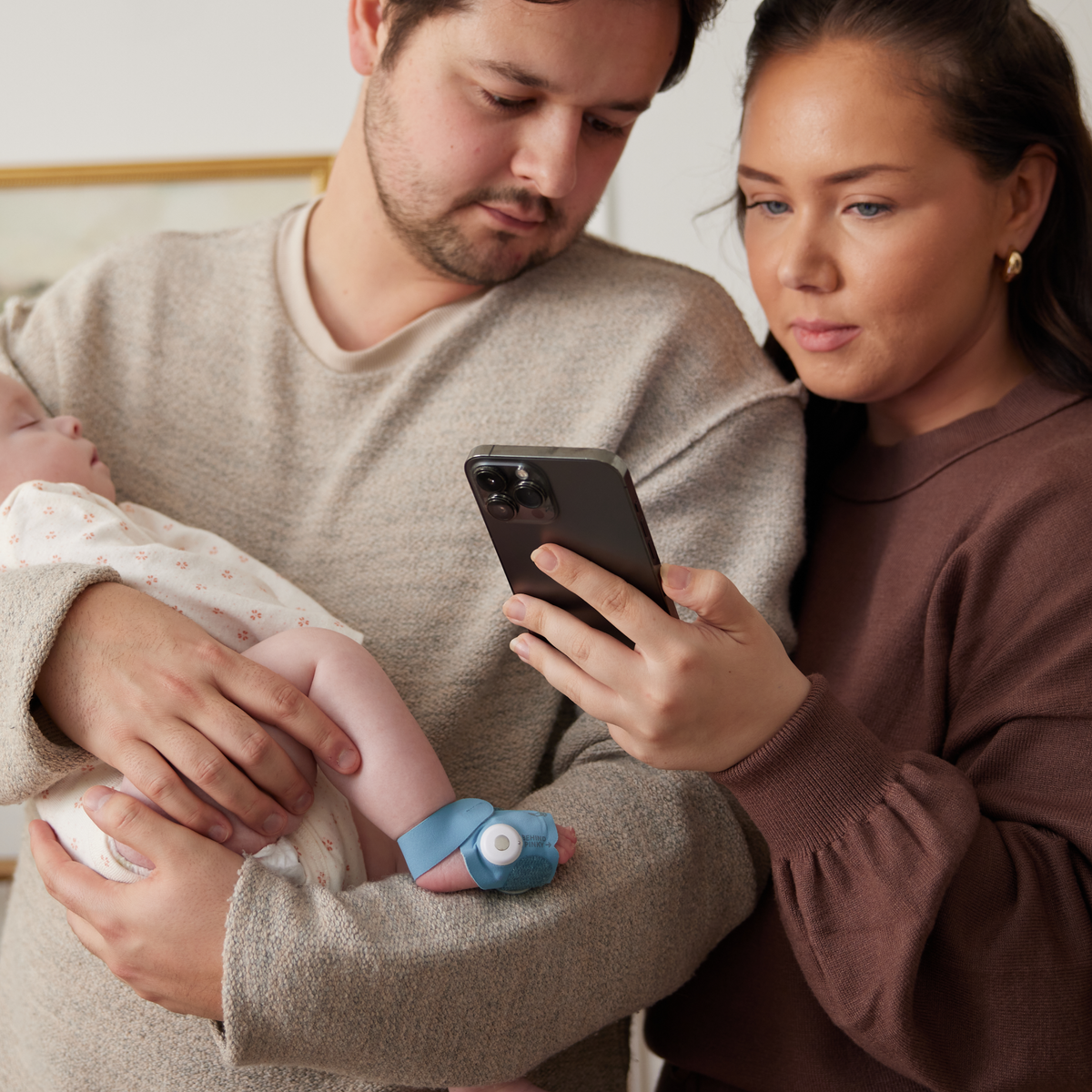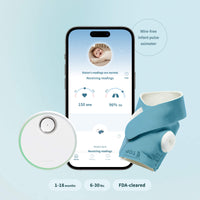Owlet Cares is our advocacy initiative that is dedicated to making a positive impact in the lives of babies and parents.
One way we do this is by partnering with nonprofits all over the world who share our mission. These groups participate in our 3:1 match program. When they purchase one Owlet product, we match it with two, meaning three families are reached.
Each month, we shine a spotlight on one of our foundation partners and the important work they are doing.
This month, in honor of World Down Syndrome Day, we’d like to introduce you to the co-founder of Annie Louise Foundation - a nonprofit organization that exists to come alongside medical and disability families experiencing any number of diagnoses to serve as a resource hub meant to conserve parents' limited time and energy.
In her words, here is her story.
The quotes, stories, and experiences included here are those of the individuals and are not representative of Owlet's views or claims about our product. Individuals were not paid and did not submit their information as part of any paid promotion by Owlet.
Dream Sock® is intended to track baby's pulse rate and oxygen level and keep parents informed. BabySat® is a prescription-only device. Dream Sock and BabySat are not intended to diagnose, treat or cure any disease or other condition, including but not limited to, Sudden Infant Death Syndrome (SIDS) and/or Respiratory Syncytial Virus (RSV). Medical decisions should never be made solely using Dream Duo™ and Dream Sock data. BabySat (prescription-only), Dream Duo and Dream Sock should not substitute for the care and oversight of an adult or consultation with medical professionals.
Author: Courtney Morey
For the 14th consecutive year, people from all over the globe will celebrate “World Down Syndrome Day” on March 21, 2025 since its inception by the United Nations in 2011.
Why that date? Down syndrome is a genetic condition that randomly occurs at conception in the earliest stages of cellular division resulting in a 3rd copy of the 21st chromosome - hence, 3/21.
For our family, we celebrate our beautiful 4-year-old daughter, Annie. Why would Owlet, a smart baby monitor company, feature an entire blog dedicated to this day and people? Keep reading.
I want to begin by covering some basic Down syndrome 101 advocacy facts and history, and then delve into what I believe Owlet is doing to improve the well-being of thousands of children with Down syndrome and similar conditions.

Down syndrome - A History
In 1960, the average life expectancy for a person with Down Syndrome was 10 years old, in 1980 it went up to 28, today it is 60 years old.*
How could such increases in longevity occur?
-
Equality in medical treatment that was not granted before
-
Advancements in the wonder of open-heart surgery
-
The end of children being taken away from their parents at the time of birth and placed in institutions. Historically in the United States, the majority of people with Down syndrome and other intellectual and developmental disabilities were kept in inhumane institutions where they were deprived of education, healthcare and even plumbing. (Globaldownsyndrome.org)
Now, in 2025 while we celebrate March 21st and how far society has come in the acceptance of people with Down syndrome, we can also cheer for the pediatric pulse oximetry company that has stepped up as an ally in their health. Owlet is not only standing in solidarity with our community, but I believe they are also improving their very quality of life.
Annie’s Story
When our oldest son was born in 2018, I had typical concerns for his general health (same as most first-time moms). When Annie was born in 2020, it was a completely different experience. I knew so very little about disabilities as well as the pediatric world of medicine. I am forever changed by our experience, and I want our story to make things easier for the next family.
Today, Annie is a thriving preschooler who rarely gets sick, but her start to life was replete with health challenges. Because of the extra genetic material that exists in every cell of the body of a person with Down syndrome, there are several co-conditions that can, although not always, occur. Examples of these conditions include: congenital heart defects, pulmonary hypertension, more frequent and harder struggle with respiratory illnesses, higher rates of dysphagia, sleep apnea, hypothyroidism, among others.* For families like ours, having well organized and visually graphed data allowed us to communicate what was happening at home to Annie’s medical team.
Congenital heart defects are typically thought of as the primary reason for consistent pulse oximetry monitoring. 50% of children with Down syndrome will have a CHD, half of those will need surgical intervention yielding 25%.* Those higher odds of low oxygen were my initial reason to buy Annie an Owlet monitor when she was just a few weeks old. However, I quickly learned that this little sock was going to do so much more for her beyond just her heart defect.
As a mother of a child with Down syndrome, I found that consistently placing an Owlet monitor on my child and documenting trends in oxygen saturation over time could also:
-
Be the deciding factor whether a child should be admitted and receive urgent oxygen support during a viral respiratory illness. (Remember, what is happening with oxygenation isn’t always reflected by the child via observable symptoms. I have seen Annie playing with a big grin on her face while her oxygen was sating at 82%. I would have never known.)
-
Be a long term view of apneic trends in sleep beyond what one night in a sleep study can relay. According to the newly published AAP guideline for caring for children with Ds, 50-79% have obstructive sleep apnea.
-
Indicate the start of a pulmonary hypertensive crisis
-
Help alert to silent aspiration with dysphagia which leads to avoidable pneumonia
I know these examples to be true because we have lived through all four. There is not time or space to list out each instance in detail that the Owlet monitor informed us of Annie desating after we tucked her into bed. If we had not had this tool Annie would have suffered unnecessarily. I have also had more conversations than I can count with fellow families who have struggled with each of the above examples. These situations are incredibly prevalent and parents need help monitoring proper oxygenation of their child’s brain.
After Annie’s heart was repaired, I genuinely thought we would never have to worry about her oxygen readings again but respiratory illnesses, sleep apnea, pulmonary hypertension and dysphagia all played a part in Annie’s story. Thankfully, each of those have since resolved. I don’t know what I would have done without the home pulse oximetry information that Owlet provided us to then communicate information to her physicians. If you can believe it, we were sent home from the hospital after a very complicated open heart surgery recovery with no medical grade pulse ox. We went on to have three admissions for respiratory illnesses + other issues mentioned above. There was such a disconnect between us and our providers when it came to oximetry and expectations. The Owlet monitor helped us because I had consistent data at my fingertips. Ironically, when we would show up in the ER, that data was gladly welcomed. Owlet’s easy-to-read graphs were a huge asset for getting Annie what she needed urgently.

Moving Forward with a Mission
In September of 2023, the Annie Louise Foundation was founded with a mission to make resources readily available and accessible and to bridge the gap between the medical world and parenting. One of the greatest accomplishments of the foundation to date has been to establish our partnership with the Owlet Cares Program. We are now able to advocate for all the reasons listed above and get these incredible devices to families who will greatly benefit from home monitoring.
Happy World Down Syndrome Day to all of the incredibly resilient, joyful and worthy kiddos who rock the extra 21st chromosome.
Glossary:
AAP- American Academy of Pediatrics the largest professional association of pediatricians in the US
CHD- Congenital heart disease
Dysphagia- A medical term for difficulty swallowing/when liquids are aspirated into the lungs instead of going down the esophagus into the stomach
Hypoxia/hypoxic- A medical term for difficulty or problems with the mechanics of swallowing, putting a person at risk for liquids being aspirated
Pulmonary hypertension- A condition where the blood pressure in the arteries of the lungs (pulmonary arteries) is abnormally high. This increased pressure can damage the blood vessels and thicken the walls of the lungs, making it harder for the heart to pump blood through the lungs
OHS- open heart surgery
Pulse oximetry- Measurement of the oxygen saturation of the blood using a device called a pulse oximeter to emit infrared and red light into the tissue, typically the finger or toe. The device then detects how much of each light is absorbed by the oxygenated and deoxygenated hemoglobin in the blood. This information is used to calculate the percentage of oxygen saturation, which is usually expressed as a value between 0 and 100
Sleep apnea- sleep apnea is a potentially serious sleep disorder in which breathing repeatedly stops and starts
* (CDC & Nationwide Children’s)
Sources:
